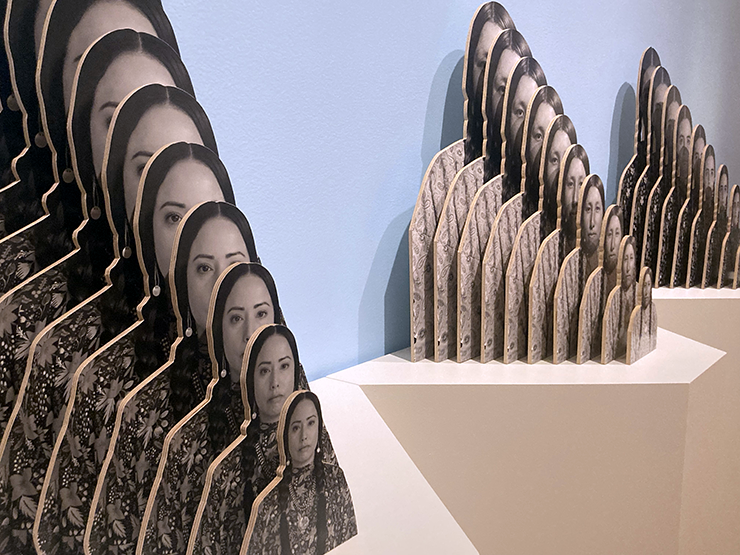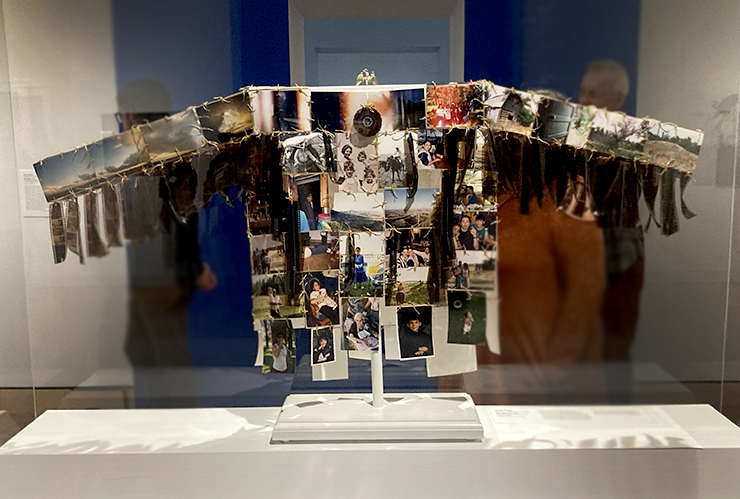An ambitious exhibition at the Minneapolis Institute of Art aims to show the world through the lens of First Nations, Métis, Inuit and Native American photographers throughout North America. Spanning 130 years, the 160 works in “In Our Hands: Native Photography, 1890 to Now” illuminate the viewpoints of artists, photojournalists, fine art photographers, instigators, documentarians and more, offering fresh perspectives that throughout history have often not been highlighted.
Casey Riley, chair of global contemporary art and curator of photography & new media at Mia, explained at a recent press conference that in the early stages of assembling an exhibition about Native photography, Mia brought together leaders in the field to discuss what that might look like. “We heard immediately at first, what took you so long? We’ve been working on this for decades, but welcome to the conversation,” Riley said.

Grey Eagle, who is Oglala and a photographer herself, said she rarely saw exhibitions like “In Our Hands” as an emerging photographer. “I would have benefited greatly from seeing it a long time ago,” she said. “And I’m glad that it’s happening now. For the next generation of photographers, to see this exhibition truly is remarkable and personally meaningful for me.
Grey Eagle characterized the exhibition as centering the experiences, authority and skills of Native people throughout history and across generations. “Native people are and have always been more than capable of telling our own stories,” Grey Eagle said.
Spanning more than a century, the exhibition is organized thematically, rather than chronologically. Historical photographs are shown alongside works by contemporary photographers and artists, counteracting notions that Natives somehow exist in the past.

As you move through the galleries, you’ll see photography and also photo-based collage like Frank Big Bear’s stunning “We Are Still Here” (2014) assemblage of 120 collage rectangles arranged on a grid, juxtaposing images of monuments in the U.S. with photographs documenting the American Indian movement. There are also sculptural pieces, conceptual works, illuminating photographs offering a window into Native history, provocative contemporary work, photojournalism, portraiture and more.
The first section addresses the concept of relations, including relations with nature and animals, the second looks to Native leadership, and the third explores Native sovereignty and presence.
Some of my favorite photographs were self-portraits of the photographers themselves. Between 1919 and 1920, a photographer named B.A. (Benjamin Alfred) Haldane photographed himself in his studio in Metlakatla, a reservation in Alaska. Surrounded by photography equipment, a megaphone, a gramophone and records (he was also a musician), he leans on a model totem pole, and represents his Wolf Clan crest in the scene. Haldane looks dapper in his bow tie and suit, and serious as well. The photograph projects for the viewer the things that are important to him — both his art and his identity.
In some places, Native photographers flip the colonial gaze, like in “Indian Photographing Tourist Photographing Indians, Crow Agency, Montana” (1991), by Zig Jackson (Rising Buffalo). It depicts a white woman photographing a Native couple, seated in lawn chairs. The work offers a critique of a long tradition of Native people having their narrative and lives co-opted.

Another sculptural piece, “War Shirt #1” (1998), by Bently Spang, adorns a shirt with snapshots of his loved ones and community, and dangles 16 mm film like fringe. “He is quite literally bringing his family with him within this war shirt,” Grey Eagle said. “I think it’s incredibly innovative because it speaks to the tactile-ness that a lot of Native people have used within photography.”
Catherine Blackburn addresses the history of boarding schools in the “But There’s No Scar” (2017) series. One work in the series features intricate bead work on deer hide, with leather cords stretching the hide onto a wood canvas. Blackburn used image transfers as tools and sources for information for a piece that makes visible the physical violence Native children experienced in the schools. Adjacent to that work is a photograph of a woman facing away from the camera, with a beaded bruise image emerging from her white cloak, her braids hanging down over it. Blackburn brings together beauty and horror as she meditates on the trauma of that history but also Native resilience.
It’s a rich and expansive show, and quite varied. That’s not surprising, given the different ways photography can be used in different contexts and the diversity of voices within the many nations represented in the exhibition. It runs through Jan. 14 at Mia. More information here.


0 Commentaires